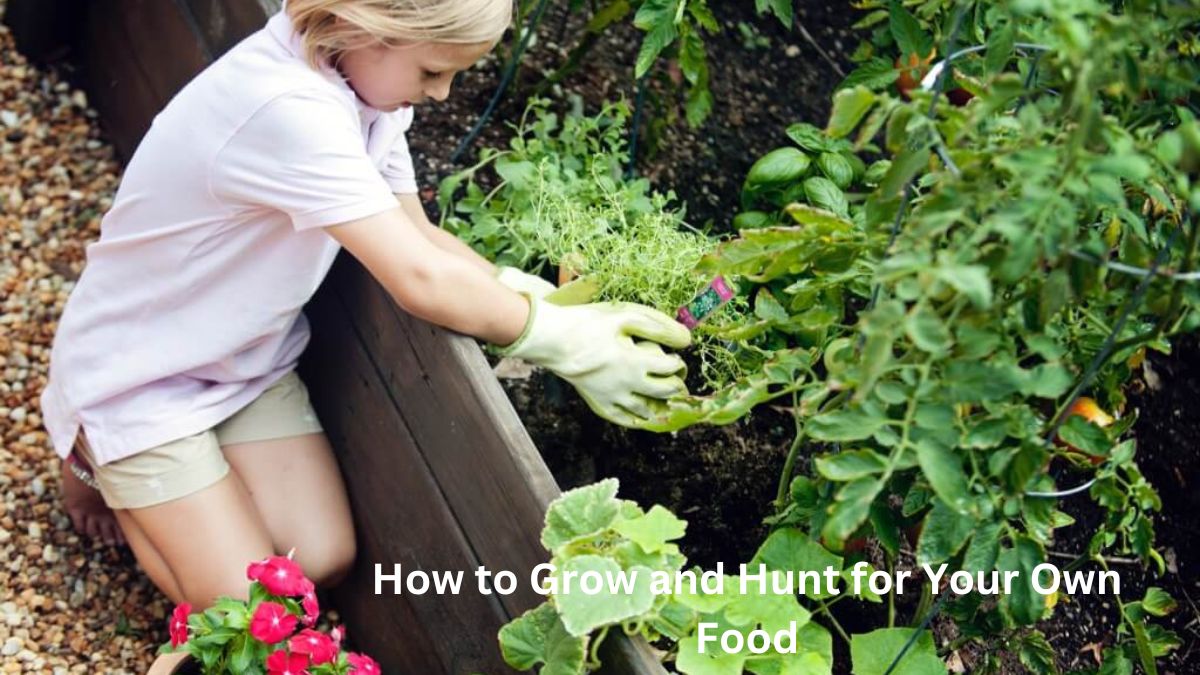With rising living costs and growing awareness of sustainable lifestyles, many people are exploring ways to grow and hunt for their own food. Whether you’re aiming to reduce reliance on grocery stores, connect more deeply with your meals, or become more self-sufficient, growing or sourcing your own food is a rewarding and empowering experience.
This guide will walk you through the basics of growing your own food for self-sufficiency and even offer solutions for those living in small urban spaces, like apartments.
What Does It Mean to Grow Your Own Food?
Growing your own food means cultivating vegetables, fruits, herbs, or even raising livestock, and it’s often part of a self-sufficient lifestyle. The goal is to produce enough food to meet your dietary needs, reducing dependence on supermarket chains and external food sources. For some, it’s more than food—it’s about fostering a deeper connection to nature and taking control of their nutritional choices.
Self-Sufficiency Through Gardening
Self-sufficient gardening refers to growing enough produce to largely sustain yourself or your family, often by incorporating vegetables and fruits that yield abundant harvests and can be preserved for future use. It often includes strategies like seasonal planting, successive planting, and learning preservation techniques like canning or freezing.
Here are a few common crops for self-sufficient gardening:
- Vegetables: Tomatoes, zucchini, carrots, beans, and potatoes.
- Fruits: Berries (like blueberries or raspberries), apples, and pears.
- Herbs: Basil, cilantro, oregano, and rosemary.
By growing a combination of these crops, you’ll create a steady supply of fresh food and even have extras to preserve or share.
How to Start Growing Your Own Food for Self-Sufficiency
Not sure where to begin? Follow these simple steps to grow food at home, whether you’re working with a backyard, balcony, or even an indoor setup.
1. Choose Your Location
Identify a space on your property with plenty of sunlight. A backyard, side garden, balcony, or even a sunny windowsill will work depending on how much space you have. If you lack outdoor space, consider vertical gardening or container gardening.
2. Create a Plan
Decide what you’d like to grow based on your taste preferences and available space. For beginners, crops like tomatoes, bell peppers, zucchini, and leafy greens (such as spinach or lettuce) are hardy, productive, and easy to maintain. You can also incorporate herbs, like mint or basil, for an effortless way to spice up your cooking.
3. Prepare the Soil
Healthy plants begin with healthy soil. Test your soil to determine its nutrient levels and pH balance, and amend it with compost or organic fertilizers if necessary. This step is especially critical if you’re using a backyard garden. For container gardening, purchase high-quality potting soil with good drainage.
4. Plant Your Crops
You can start with seeds or purchase seedlings if you’d like to see results faster. Follow the planting instructions based on each crop’s requirements, ensuring adequate spacing and depth for growth.
5. Water and Care Regularly
Water your crops consistently, keeping the soil moist but not soggy. Set up a watering schedule to prevent over- or under-watering, and provide support structures for vining plants like cucumbers or beans to help them grow upward.
6. Harvest Your Crops
Once your plants mature, it’s time to enjoy the fruits of your labor (literally). Harvest your food at its peak ripeness for the best flavor and nutritional value. Consider learning preservation techniques like freezing or canning to make the most of excess produce.
Crops to Start With
The easiest plants for beginners include:
- Bell peppers
- Cucumbers
- Tomatoes
- Lettuce
- Zucchini
- Strawberries
- Garlic
- Spinach
How to Grow Your Own Food in an Apartment
Even if you live in a small urban space, growing food is possible. Apartment dwellers can use vertical gardening techniques and containers to maximize their space and grow plants indoors or on balconies.
Key Strategies for Apartment Gardening
Maximize Vertical Space
Use hanging planters, trellises, or wall-mounted shelves to grow more in a compact area. Herbs like mint or basil thrive in hanging containers, while cucumbers or tomatoes can climb trellises.
Use Sunlight and Grow Lights
Position your plants near south-facing windows for ample sunlight. Rotate pots regularly to ensure even light exposure. If natural light is insufficient, supplement with LED grow lights, which are perfect for leafy greens and herbs.
Choose the Right Plants
Pick crops suited to small spaces and indoor conditions. Popular choices include lettuce, spinach, microgreens, cherry tomatoes, and small peppers. Herbs like rosemary, thyme, and cilantro are also excellent options.
Consider Hydroponics
If you’re short on space, hydroponic systems allow you to grow plants in nutrient-rich water without soil. These systems are highly efficient and ideal for growing greens, herbs, and even strawberries indoors.
Tips for Successful Apartment Gardening
- Use pots with drainage holes to prevent overwatering.
- Opt for high-quality potting soil for better yield.
- Check your building rules for restrictions on balcony gardening.
Why Grow And Hunt For Your Own Food?
It goes beyond just eating fresher food. Growing and hunting for your own food fosters a deeper connection to nature, reduces your carbon footprint, and empowers you with the skills to meet your nutritional needs efficiently.
Plus, by growing crops in self-reliant ways (like saving seeds or using vertical gardening techniques), you’re cultivating long-term sustainability.
Growing Your Independence
Whether you live in a spacious home with a backyard or a cozy urban apartment, growing your own food is achievable and fulfilling. By planning carefully and starting small, you’ll soon find yourself enjoying homegrown meals that are fresher, tastier, and more sustainable.
Begin with easy-to-grow plants, learn as you go, and don’t be afraid to experiment with different gardening techniques to maximize your harvest.
Want to take the first step? Start with vegetables like tomatoes, lettuce, and cucumbers—and watch your self-sufficient garden grow!
Want to take the first step? Start with vegetables like tomatoes, lettuce, and cucumbers—and watch your self-sufficient garden grow! With these easy-to-grow varieties, you’ll be able to enjoy fresh produce right from your backyard. So why wait? Begin your journey towards a thriving garden today.











